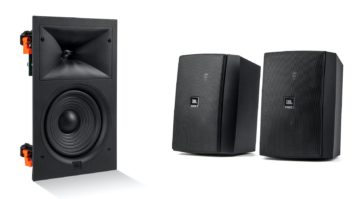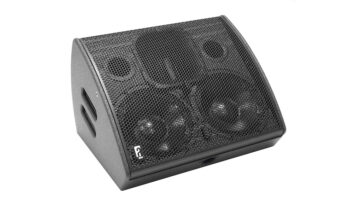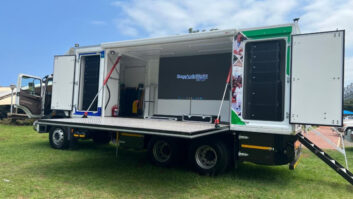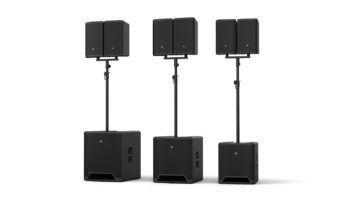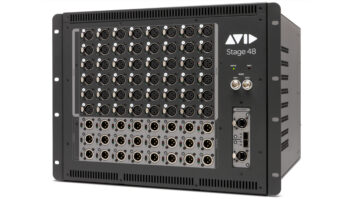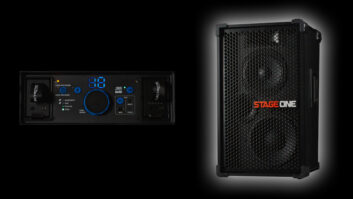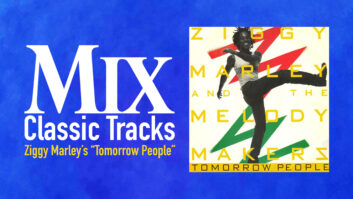It would not be completely off base to imagine a team of sled dogs trekking across Dome Audio Video & Effects. The two-story facility sprawls over 50,000 square feet of downtown Toronto and is home to more than 100 employees-mixers, audio and video engineers, digital editors, managers and account executives-creating something of a city-within-a-city. But it wasn’t always this way.
Jeff Smith opened the original one-room music studio in 1972 as Jeff Smith Interchange. The facility grew as Canada’s musical star rose, hosting artists such as Rush and Alannah Myles and music-heavy productions like SCTV. Then, just as the country’s music fortunes retreated in the 1980s, Hollywood and Madison Avenue came knocking, seeking a haven from rising domestic production and post-production costs. The facility, meanwhile, had been bought by LaBatt’s (yes, the beer brewer) and renamed Sounds Interchange. It grew to five studios doing primarily music recording and mixing, but by the late 1980s had crept into advertising, broadcast and film post-production.
LaBatt’s was then purchased by Belgian beer-maker Interbrew, and Canada’s legal restrictions on foreign ownership of domestic media industries kicked in, forcing the new owner to divest its interests in broadcasting. (Labatt’s owned a controlling interest in regional television, as well as a stake in the Toronto Blue Jays major-league baseball franchise and their Skydome home.) The accompanying broadcast and post facilities had been renamed yet again as Dome Productions, and Interbrew spun off its entertainment properties, creating a consortium known as NetStar.
Dubbed DAVE under its present ownership, the facility is a beehive of post work, most of it coming from the U.S. and abroad thanks largely to what’s been euphemistically referred to as a “very favorable exchange rate.” (That rate, along with certain tax incentives, has prompted an angry response from production companies and unions in the U.S. that are seeking federal legislation to implement an import tax, among other options.) Consequently, DAVE has been pulling in foreign film, video and editorial work by the truckload in the last several years including feature films and movies-of-the-week for clients such as Showtime, HBO, Sony and Paramount, and a growing number of productions slated for DVD and other new media. And as many as 10% of all of the films done at DAVE are for the large-screen format IMAX. (It’s no coincidence that the company that originated the format is also based in Toronto. The IMAX Corporation now has about 350 screens worldwide and expects to add another 100 by the end of the year.)
THEATRE ONEDAVE has 16 audio studios-eight of varying size, including a dedicated Foley studio, and another eight digital audio editing suites outfitted with Pro Tools, DAWN and ScreenSound workstations. Recording is either to DA-88, Sony 3348 digital or Studer A827 analog multitrack decks. But the crown jewel is Theatre One, one of a handful of large-format/multiformat sound-to-picture mixing studios in the world and the only one of its type in Canada. The huge room seats 60 on racked stadium-style seats in the rear. In front is a large, curved producer’s desk and a 48-rail, 56-frame Studer D950S digital console.
The 17×24-foot screen can be formatted for standard aspect ratios, as well as the approximately 1.5:1 IMAX dimensions. Theatre One was designed by Claude Fortier, who also designed the specified IMAX audio monitoring system, known as SOTA. The SOTA speakers are a low-efficiency/high-dispersion system, with a single point source radiating out at 160degrees from four corners and the screen. It requires significant amplification-about 15,000 watts total-to fill the room. The room is also THX-certified, and its THX monitor specification utilizes 10 speakers arrayed in an LCRS front and rear surround configuration, with a top-screen and Voice of God speaker as well.
At DAVE, the IMAX playback system uses an Oxmoor EQ system, which can superimpose up to eight frequency response curves on the otherwise flat monitor chain, creating a full 20 to 20k Hz spectrum. “That’s something you don’t get in THX, which has a specific EQ curve designed for cinematic use,” explains James Porteous, veteran of the facility’s many incarnations and now supervisor of its extensive audio operations. “It’s not really designed to mix music in, which the SOTA setup, which can actually run 20 to 20 flat, is. If you’re mixing music for DVD, for instance, you’d want a flat frequency response monitoring environment in 5.1, which this gives you.” As a result, Theatre One is a truly multipurpose room, usable for 5.1 music mixing and music video work, as well as film sound.
In addition to standard projection systems, Theatre One has a DLP projector, a system developed by Texas Instruments that uses as many as a million mirrors to focus light from a halogen bulb through dichromatic filters that refocus through a single aperture so that there is no RGB convergence.
Theatre One’s centerpiece is the Studer D950S console, which, at ten layers deep, has a theoretical capacity of 560 inputs, though it is capable of 480 at the moment.
Porteous does not see that as overkill. “IMAX films average 300 to 350 sound sources,” he says. “The one we did for Sony-Across the Sea of Time-has 450 individual sound sources. And even standard film is using more and more sound in the surround format. So it’s really not that huge a number of inputs. The main reason we went with the Studer, though, was that it was highly and quickly configurable. It takes us two hours to configure the SSL 4000 we use in the other surround mixing studio. The 950 takes two minutes. And everybody loves the way it sounds, which doesn’t hurt.”
The 950’s large input capacity is also useful for the 3-D sound that some IMAX films are using, in conjunction with 3-D picture projection that uses a pair of the DLP projectors. (The audience wears special IR binaural headsets equipped with electronic viewing filters.)
As complex as its operations are, the business philosophy of DAVE is simple enough: “In the past, the way post worked outside of Hollywood is what I call ‘shoot and run,'” says Porteous. “What we’re doing here is creating an environment that says ‘shoot and stay.'”
DAVE exists in an increasingly rarefied stratum: the ultra-high-end facility that handles a wide range of audio and video chores, from Foley to ADR to digital editing to scoring to large-format mixing and layback. While such facilities must be able to connect their clients to any point on the globe-DAVE has operated ISDN lines routinely for years and is on the verge of implementing T3 lines-they also must interface with the numerous project studios that now handle more and more of the day-to-day work in audio. “We have Pro Tools, DA-88 and other formats for that,” Porteous says. “But we’re also getting formats like RADAR in here. It really is a balancing act. And it’s tricky. But there’s a real thrill to it, too. It’s like steering a supertanker.”
